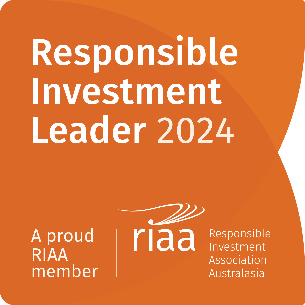Signposts to watch out for in 2020

6 December 2019
Equity investors have enjoyed an incredible ride over the past decade with the US S&P500 index rallying over 300% since early 2009, and New Zealand’s NZX50 up by a similar amount. This performance has been supported by a range of sources including record low interest rates, massive liquidity strategies from the major central banks and government fiscal initiatives. As we look into 2020, with many stock markets trading at, or near to, all-time-highs the question many are asking is where we go from here and what are the most significant signposts to look out for.
In a global context, the two economies that continue to have the most influence on world growth outcomes are the US and China. Over the past year both these countries have been challenged by deteriorating outcomes. A major catalyst for this has been the Sino-US trade tensions, which have created uncertainty across the global supply chain and weighed on corporate profits. The recent reporting of third-quarter GDP growth for the US, as being the second slowest rate since early 2016, was testament to this with business fixed investment being particularly hard hit. Recent announcements though suggest that the potential for progress on this issue appear to be improving. Although time frames are fluid, it looks like the Chinese will soon be back buying agricultural product and progress has been made on issues surrounding Intellectual Property. Our expectation is that Trump needs progress on trade before the elections in 2020 and Beijing is also feeling anxious about the consequences of the dispute on their manufacturing industry. Even if a comprehensive deal is not signed, any sense of a truce between the two parties should augur well for risk assets such as equities.
In response to the recent slowing growth dynamic, central banks have again been implementing supportive strategies. The US Federal Reserve, for example, has cut interest rates three times since July this year (0.75% collectively). This directional shift is important because it has occurred against a backdrop where the Fed had stopped their Quantitative Easing programme in 2014, began raising rates in 2015 and initiated a reduction in their balance sheet in 2018. Today though we see global money supply accelerating and yield curves are beginning to steepen. What this means is that the interest rates on longer duration bonds are increasing which is historically a sign that the growth outlook is beginning to improve. Ultimately this is also positive for equities because corporate profits are leveraged to aggregate demand, and with inflation remaining stubbornly low (and we expect it to remain so over the medium term) any disruption to the recovery thesis will be met by a central bank response. At the Fed’s most recent meeting Chair Jerome Powell highlighted that the stance of policy was now “appropriate” to keep the economy growing moderately, the jobs market strong and inflation near the central bank’s 2% goal. A recent Fed Senior Loan Officer’s Survey highlighted that a recovery in loan demand is occurring in the US which is encouraging because it is evidence that conventional monetary policy continues to be an effective tool.
Politics next year will also be of critical importance to the way in which financial markets perform. Regardless of your view of President Trump, his impact on US (and global) stock prices since his victory in the 2017 presidential contest has been positive. Corporate America has benefited from a number of his policies, although the Tax Plan that he introduced in December 2017 was of particular importance. Included within this was a range of cuts to individual tax rates and a reduction in the corporate rate from 35% to 21%. As we look towards November 2020 (the next US election) there will be a great deal of attention on the impeachment process and the ultimate Democratic nominee to contest the presidency. Although we won’t have a clear indication of who this will be until March next year, a number of the current front-runners are looking very left-wing and therefore perceived by the market to be business unfriendly, if they were to be elected. An example of this is that if a Democrat was successful in their bid and they reversed the 2018 corporate tax cut to once again being 35%, the estimated impact on S&P500 earnings-per-share would be a hit of 7%. As is typically the case though, there is often a drift towards the centre as the process moves forward but this is something that investors will closely monitor. Recent success for the Democrats in Kentucky’s gubernatorial race as well as Republican losses in the Virginian state legislature have further clouded the picture.
In New Zealand and Australia, the economic climate is still somewhat uncertain although in Australia there is evidence that we have passed the trough with recent housing data in particular providing cause for encouragement. After falling in general by 8.4% between 2017 and June 2019, property prices as a whole are now 2.9% off their recent lows and the best performing capital city over the three months to October this year is Melbourne, up 5.5%. In a recent statement by RBA Governor Philip Lowe, he noted that “the low level of interest rates, recent tax cuts, ongoing spending on infrastructure, the upswing in housing prices in some markets and a brighter outlook for the resources sector should all support growth’. GDP is forecast at 2.25% next year, rising to 3% in 2021.
Unfortunately for New Zealand our economic cycle appears to be lagging that of Australia with recent business confidence reported at the lowest levels since 2009. Trading activity declined and a net 11% of businesses reported a decline in demand over the September quarter. At the RBNZ’s recent policy meeting rates were left unchanged but they did identify scope for additional monetary and fiscal stimulus if required. Similar to the US, we are also entering into an election year in 2020. The implications for local equities are unlikely to be as potentially dramatic as they could be in the US but under our MMP electoral voting system and with a number of referendums to also be considered there will be plenty of noise for investors to work through.
Turning to equity valuations, globally markets are not looking overly expensive. Despite the strong strength and duration of the bull market, the price-to-earnings multiple for global stocks (as captured in the Morgan Stanley Capital Index) is currently only broadly in line with historical averages but relative to bonds, equities look very attractive. The corporate earnings cycle in the US is also looking productive with third-quarter results (currently being reported) surprising on the upside. This has resulted in earnings-per-share growth assumptions for the S&P500 beginning to inflect higher.
In Australia the opportunities for investors into 2020 are somewhat sector dependent. The major Banking stocks will continue to operate under the weight of change resulting from the Royal Commission and increased capital requirements whilst the Mining sector looks well positioned to leverage off improving global macro fundamentals and commodity prices. In New Zealand, we remain encouraged by the high quality of many of our listed businesses, but we need to remain wary of the idiosyncratic risks which exist in our local market. The recent review by Rio Tinto on the Tiwai Point Aluminium Smelter is a good example of this dynamic. Despite the NZX50 Index looking expensive on traditional measures, we continue to believe that our local exchange is well positioned to benefit from ongoing international investor demand (many of those hunting our cash dividend yield of 3.5%), KiwiSaver and corporate earnings which are forecast to grow by over 7%.
In summary, the world continues to face a range of uncertainties, but this is always the case. Stock markets provide a great window into the medium-term prospects of economies and corporate potential and when all factors are considered today, and looking into 2020, it appears that the incremental changes being experienced are positive. We believe that risk assets, such as equities, will perform well going into next year but a close eye will need to be kept on events such as central bank policies and the US election.





